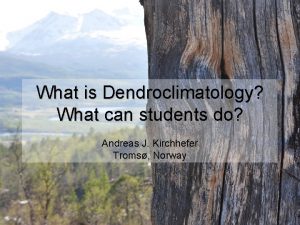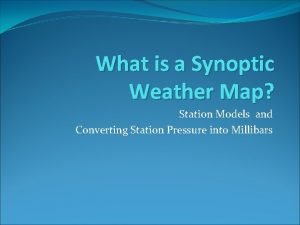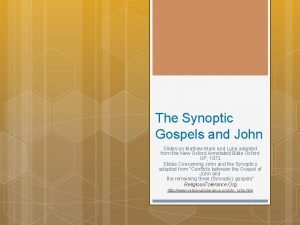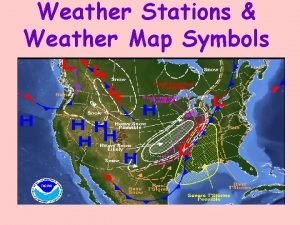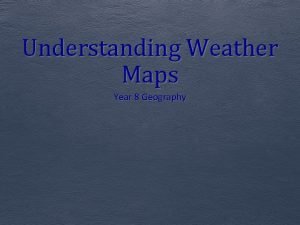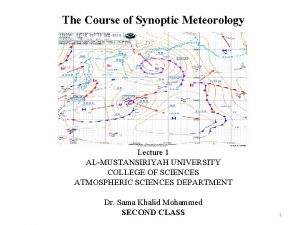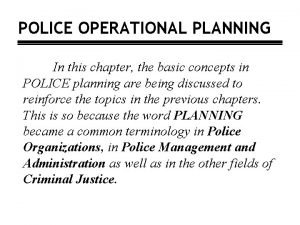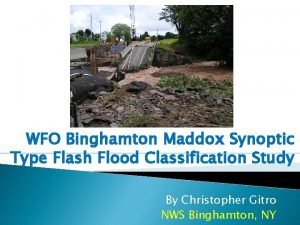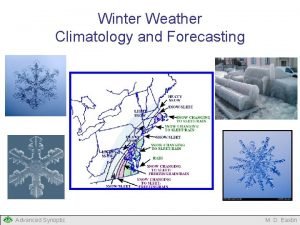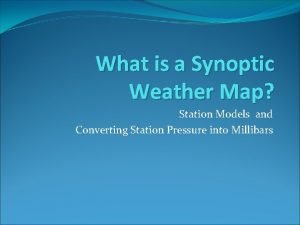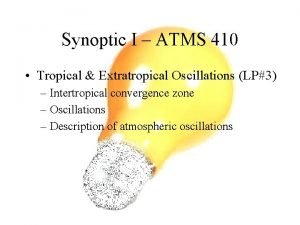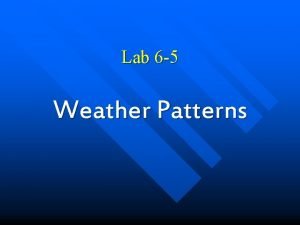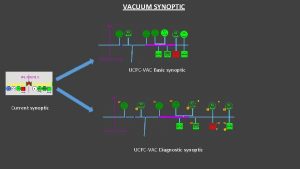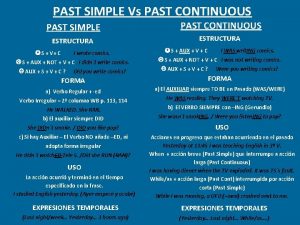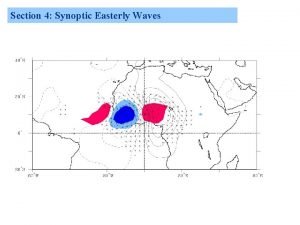Synoptic Dendroclimatology and Dendrohydrology Past Present Process Katie























- Slides: 23

Synoptic Dendroclimatology and Dendrohydrology: Past, Present, & Process Katie Hirschboeck 70 th Anniversary Tree-Ring Symposium Laboratory of Tree-Ring Research

In what ways can we make valid connections between: Past. . . Present. . . 1993 floods & Process? 1996 -2004 drought

How can our understanding of these connections be applied to solve critical environmental problems? Acknowledgments: &

The Skeleton Plot Narrow Rings = low growth extremes Wide “big” Rings = high growth extremes A record of EXTREME EVENTS

1740 1741 1742 1743 1744 These extreme events shape the Upper and Lower Tails of the Sampling Distribution. . . 1745 1746 1747 1748 1749 1750 . . . as well as the Upper and Lower Tails of the Probability Distribution Function used to statistically evaluate and manipulate the data

In the case of climate-sensitive tree rings, the environmental processes that shape the Upper and Lower Tails are distinctly different from a meteorological and hydroclimatologic perspective.

Synoptic dendroclimatology: “ using dated tree rings to study and reconstruct present and past climates from the viewpoint. . . of the climate’s constituent weather components. . . and the way in which these components are related to atmospheric circulation at all scales. " (from Hirschboeck et al. , 1996 “Synoptic Dendroclimatology: Overview and Outlook” )

FLOOD STUDIES

The PAST: What is the Process-Based Interpretation of a Tree-Ring Reconstruction? Process-Sensitive “Telescoping” Back in Time

The PRESENT: How do different hydroclimatic processes manifest themselves in trees vs river basins?

Verde River Basin Comparison: Observed, Reconstructed, & Instantaneous Peak Flows Water Year

Jan 1993 Verde River Basin Instantaneous Peak Flows Classified by Synoptic Type Synoptic Convective Tropical Storm Mar 1938 Feb 1995 Winters of 1978 -80 Dec /Jan 1952 Feb 1927 TS Norma Sep 1970 1950 s convective dominance Water Year Dec /Jan 2005

Synoptic pattern for record-breaking floods of winter 1992 -93 in Arizona

Importance of BLOCKING circulation anomaly patterns drought / Blocking leads to the PERSISTENCE of circulation features that produce EXTREMES

1993 Verde River Comparison: 700 Basin mb Anomaly Observed, Reconstructed, Patterns associated & Instantaneous Peakwith Flows “Upper and Lower Tail” Extreme Events 1978 -1980 1996 & 2002 1953 -1964 1950 s + Drought Water Year 1970 Current Drought

PROCESS: analyzing the reconstruction mechanistically Both reconstructed & observed annual flows track the magnitude of the instantaneous peak better during synoptic (winter) events Synoptic Convective Tropical Storm

Verde River study of paleoflood data vs. tree-ring based annual streamflow reconstruction Analysis of present “telescoped” extremes (i. e. , instantaneous vs. mean annual flow) to better interpret reconstruction (based on Graybill reconstruction & linked to paleofloods by: House, Pearthree, and Newly reconstructed Verde River Annual Flow

SUMMARY, INSIGHTS & IMPLICATIONS

On Upper & Lower Tails: Wide rings can occur in otherwise narrowring sequences, high flows and/or large floods can occur during periods of drought / low flows The probability of such occurrences can be computed using a long-record reconstruction an important statistic for water supply managers for “drought relief”

On Blocking & Persistent Anomalies: CIRCULATION ANOMALIES involving quasi-stationary patterns such as blocking ridges and cutoff lows are key synoptic mechanisms that make skeleton plotting, pattern matching, & cross-dating possible. Since the characteristic drought circulation pattern in the United States is a strong middle- and upper-level ridge (and occasional blocking high). . . it should not be surprising that extreme flooding and persistent drought occasionally coincide, at least in adjacent regions.

On Interpreting the Past based on Our Present Understanding of Proceses: Synoptic dendroclimatology / hydrology has demonstrated that shifts in storm track locations and other anomalous circulation behaviors are clearly linked to notable ring widths, streamflow and drought behavior Such shifts are likely to be the factors most directly responsible for persistent and unusual sequences and episodes seen in long chronolgies and reconstructions

On Process- Sensitive Upscaling & Telescoping Back in Time: Persistence bridges meteorological and climatological time scales Persistence = underlying factor in atmosphere / river basin / landscape synergy . . . and especially, DROUGHT!

 What is dendroclimatology
What is dendroclimatology Past simple past continuous or past perfect
Past simple past continuous or past perfect Past simple / past continuous / past perfect simple
Past simple / past continuous / past perfect simple Write a story using past simple and past continuous
Write a story using past simple and past continuous Past simple past continuous past perfect timeline
Past simple past continuous past perfect timeline Wjec criminology past papers unit 4
Wjec criminology past papers unit 4 Synoptic weather map symbols
Synoptic weather map symbols Synoptic gospels
Synoptic gospels Boger synoptic key ppt
Boger synoptic key ppt Weather station symbol
Weather station symbol Geography synoptic weather map
Geography synoptic weather map Synoptic meteorology definition
Synoptic meteorology definition Police operational planning
Police operational planning Synoptic problem definition
Synoptic problem definition Maddox synoptic pattern
Maddox synoptic pattern Synoptic
Synoptic Synoptic weather station model
Synoptic weather station model Synoptic gospels
Synoptic gospels Vos program
Vos program List the synoptic gospels
List the synoptic gospels Balance using space
Balance using space Synoptic
Synoptic Lab 6-5
Lab 6-5 Synoptic gospels
Synoptic gospels
